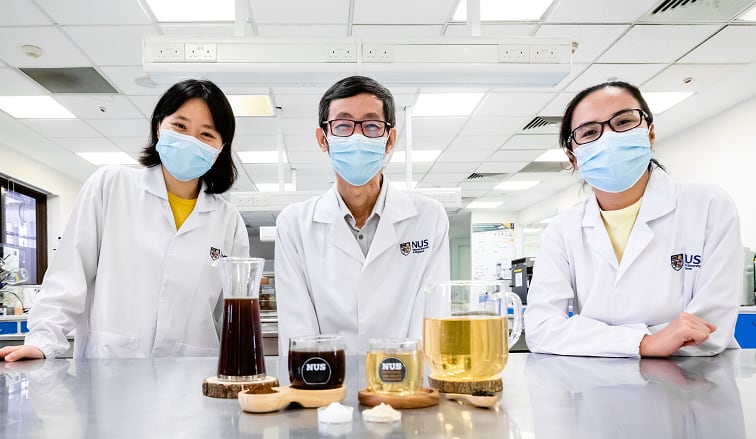Moreover, market research has shown that APAC’s infant probiotics is a “very attractive” sector with a growing consumer interest in scientifically backed solutions, especially concerning constipation and eczema.
This is according to experts who were presenting at an interactive broadcast event titled “How to Choose the Right Probiotic Solution for Infant Health”. [Listen on demand here]
The interactive broadcast event is the first of NutraIngredients-Asia’s and FoodNavigator-Asia’s ‘Spotlight on…’ initiative.
Bifidobacterium exists in the highest number as compared to other bacteria species in the GI tract of newborns – pointing to its role in infant nutrition, according to Professor Douwe van Sinderen.
Prof van Sinderen is the full professor of molecular microbiology in the School of Microbiology and also the principal investigator in APC Microbiome Ireland.
He was also joined by Dr Jin-Zhong Xiao, director of Next Generation Science Institute and technical director at the International Division of Morinaga Milk Industry, and Ewa Hudson, director of Insights at Lumina Intelligence during the panel discussion of the broadcast.
“As soon as we are born, our GI tract is more or less sterile, and very quickly, Bifidobacterium increases at very high numbers, it constitutes the majority of the bacteria as long as a baby is being breast fed.
“As soon as babies wean off breast milk and get solid foods, you see other bacteria, although there is only a relatively modest drop of the overall number of bifidobacterial,” Prof van Sinderen said.
Research on Bifidobacterium has been growing, with 1,085 scientific research papers relevant papers published in last year alone.
In the past 70 years, there were 10,006 papers on Bifidobacterium published, Prof Van Sinderen pointed out.
Existing research showed that the onset of conditions such as obesity, diabetes, irritable bowel syndrome (IBS), and cancer, is linked to the drop of Bifidobacterium count.
For instance, their absence is linked to stunted growth and obesity, according to the studies by Blanton and et al in 2016 and Le Chatelier et al in 2013.
“Early life colonisation by Bifidobacterium is considered to be important for pathogen protection and immune development during infancy, but also thought to have life-long positive effects,” he said.
Out of the 90 over species of Bifidobacterium, the dominant species are B. longum, B. bifidum, and B. breve.
Human residential Bifidobacterium (HRB), such as B. longum subsp infantis and B. longum subsp. lactis, could play a key role in promoting the growth of the dominant species, said Dr Xiao.
Supporting Bifidobacterium
The HRBs are able to proliferate in the GI tract of breast-fed infants as they are able to break down and take in human milk oligosaccharides (HMOs) present in breast milk as foods.
Moreover, HRB shows a high compatibility with human milk and possessed tolerance to lysozyme – the main antimicrobial enzyme in human milk, Dr Xiao explained.
He highlighted that Morinaga currently has developed four proprietary and clinically backed HRB strains for promoting infant health.
The strains are namely B. longum BB536 for promoting gut and immune health, B. breve M-16V for promoting the colonisation of Bifidobacterium in the gut of preterm infants.
The other two strains are B. infantis M-63 and B. breve B-3 for weight management.
Future research could focus on the mechanisms of Bifidobacterium, which could in turn lead to the development of probiotics with more targeted functions, prof van Sinderen said.
Other questions include how Bifidobacterium managed to enter into the GI tract of newborns in the first place.
“Once we know the specific route in which they can make us healthier or maintain health, we can try to find deliberate the champion among the probiotic bacteria that can do that even better and have a targeted selection,” said Prof Van Sinderen.
Attractive niche market
Probiotics for infants, as compared to probiotics for the general population, adults, women and children, is a much smaller market but market insights have shown that this is a highly attractive market with growth potential.
Out of over 3,000 bestselling probiotics in the e-commerce space across 25 countries, only 3% (94 products) were targeted at infant health.
In APAC, 39 out of 1,144 bestsellers are for infants, Hudson pointed out.
“Probiotics for infants is an attractive niche in an increasingly crowded probiotics space.
“Because the result is quite direct for parents to observe, it is therefore easier to build trust if these products work,” Hudson said.
An analysis of the Google search trends on microbiome and probiotics also showed that the top keyword in the last 12 months was “probiotics for baby constipation”.
The number of search terms on “probiotics for eczema and baby” was also up 22% yoy.
Top keywords such as “do probiotics help?” also showed that consumers are concerned about the research and efficacy behind probiotics.
“These are important questions to address in order to raise [consumers’] confidence,” Hudson said.
An analysis of the online consumer product reviews showed that infant probiotics containing L. rhamnosus were the most reviewed in China, followed by those containing L. reuteri B. breve.
Outside of China, L. reuteri was the most reviewed, followed by L. rhamnosus and products containing Bifidobacterium.
“It is quite clear that products containing Bifidobacterium certainly receive high sale ratings from consumers, both in China and outside of China, positioning this species to be the next star,” she said.





